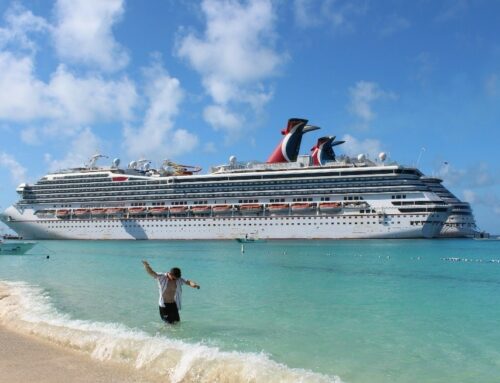CE Ratings: How to Assess Motorcycle Gear for Safety
May is Motorcycle Safety Month!
 If you’re a motorcycle rider, you probably know how important it is to wear protective gear that can save your life in case of a crash. But how do you know if your gear meets the safety standards and actually will be effective? That’s where CE ratings come in.
If you’re a motorcycle rider, you probably know how important it is to wear protective gear that can save your life in case of a crash. But how do you know if your gear meets the safety standards and actually will be effective? That’s where CE ratings come in.
CE ratings are the European Union’s (EU) way of certifying that a product meets the health and safety requirements for the public. CE stands for “conformité européenne” (French for “European conformity”); the CE mark indicates that a product has been tested and approved by a third-party laboratory.
Motorcycle gear is considered personal protective equipment (PPE) in the EU and must comply with the PPE regulation that came into effect in 2018. This regulation requires that all motorcycle garments (such as jackets, trousers, gloves, boots and impact protectors) are tested according to a specific set of standards called EN 17092.
EN 17092 defines six classes of motorcycle garments, from Class C to Class AAA, based on their level of protection and intended use. Class C garments are only meant to hold impact protectors in place; they do not offer any abrasion resistance. These are designed to be worn with other classes of more protective garments. Class AAA garments are the most protective and are suitable for high-speed riding on racetracks or highways. They offer the highest level of abrasion resistance, tear strength, seam strength and impact absorption.
The table below summarizes the main differences between the classes of motorcycle garments according to EN 17092:
| Class | Abrasion resistance | Tear strength | Seam strength | Impact absorption | Intended use |
|---|---|---|---|---|---|
| C | None | None | None | High | Undergarment |
| B | Low | Low | Low | High | Urban riding |
| A | Medium | Medium | Medium | High | Urban riding |
| AA | High | High | High | High | Touring riding |
| AAA | Very high | Very high | Very high | High | Racing or high-speed riding |
To achieve a CE rating, a motorcycle garment must pass a series of tests that measure various aspects of its performance, such as abrasion resistance, impact absorption, rotational cut resistance, transverse rigidity, and more. These tests are conducted by using specialized machines that simulate different types of impacts and stresses on the garment. For example, the Darmstadt machine is used to test abrasion resistance by dragging a sample of the garment over an abrasive surface at a certain speed and measuring how long it takes to wear through.
 The CE rating of a motorcycle garment is usually indicated by a label or tag that shows the class of the garment, the pictogram of a motorcyclist, the standard number (EN 17092) and the year of production. The label also may show the CE mark and the name or logo of the manufacturer. Some garments may have different ratings for different zones or parts, such as sleeves, shoulders or knees.
The CE rating of a motorcycle garment is usually indicated by a label or tag that shows the class of the garment, the pictogram of a motorcyclist, the standard number (EN 17092) and the year of production. The label also may show the CE mark and the name or logo of the manufacturer. Some garments may have different ratings for different zones or parts, such as sleeves, shoulders or knees.
The CE rating system isn’t perfect, however, and has some limitations. For example, CE ratings do not consider some factors that may affect the performance of a garment, such as fit, comfort, ventilation, visibility or weather resistance. They also can’t guarantee that a garment will protect you from all injuries in every crash scenario. However, the CE rating does provide a reliable way of comparing different products, and choosing the ones that suit your needs and preferences.
CE ratings are not mandatory in other countries outside the EU, but they are widely adopted by many manufacturers and retailers as a way of demonstrating their commitment to quality and safety. In the U.S., there is no official standard for motorcycle gear, but many riders follow the European standards as a guideline. CE ratings can help you make informed decisions when buying motorcycle gear and ensure that you are getting something protective when shopping for motorcycle clothing without any prior knowledge of materials, constructions or test methods.
 So next time you shop for motorcycle gear, look for the CE label and check what class it belongs in. Remember that higher classes offer more protection but may also be more expensive, heavier or less comfortable. Choose the class that matches your riding style and environment and always wear your gear properly. And most importantly, ride safe!
So next time you shop for motorcycle gear, look for the CE label and check what class it belongs in. Remember that higher classes offer more protection but may also be more expensive, heavier or less comfortable. Choose the class that matches your riding style and environment and always wear your gear properly. And most importantly, ride safe!
We at the Herd Law Firm, PLLC, are motorcycle riders, too! We support bikers and motorcyclists injured on the road, and have successfully represented such victims seeking the assistance and compensation they so need and deserve.
5/10/2023
Sources:
CE ratings in motorcycle gear: What do they mean? – RevZilla. https://www.revzilla.com/common-tread/ce-ratings-in-motorcycle-gear-what-do-they-mean.
https://www.revzilla.com/common-tread/ce-ratings-in-motorcycle-gear-what-do-they-mean.
Motorcycle Armor Ratings Explained :: MotorcycleGear.com. https://www.motorcyclegear.com/info_pages/faq_armor_ratings_explained.html.
Motorbike kit CE ratings explained | Clothing | MCN Products. https://products.motorcyclenews.com/clothing/clothing/ce-ratings-explained/.
What Is CE Approved Gear? – MotoReview Australia. https://motoreview.com.au/gear-guides/what-is-ce-approved-gear/.
What is CE-Rated Motorcycle Armor? – NBT Clothing. https://www.nbtclothing.com/blogs/news/what-is-ce-rated-motorcycle-armor.







